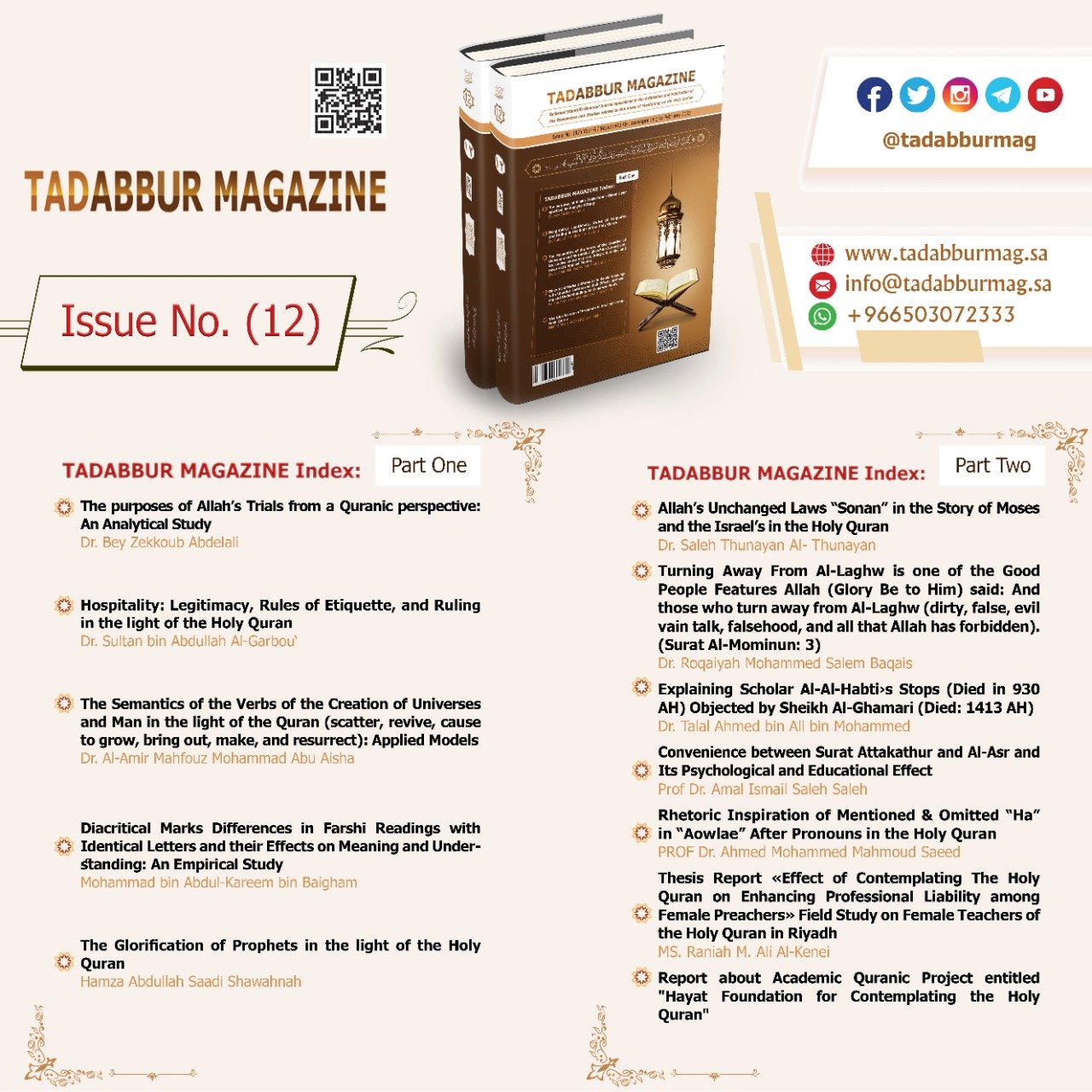The purposes of Allah’s Trials from a Quranic perspective: A Thematic Study
Main Article Content
Abstract
This research examines the rationales behind tribulations from a Quranic perspective. It aims to shed light on the objectives of tribulations as reflected in the Noble Quran because of their doctrinal, educational, and moral impacts on the Muslim's life. It also employs the inductive analytical and the deductive approaches. The research found that the main rationale behind tribulation is to elicit the meanings of servitude to Allâh alone from the afflicted person's psyche and find out about the extent of his religiousness by burdening him with distress, hardship and agony. The research concluded the main rationales behind tribulation in accordance with the Noble Quran, analyzed and explored them, which reached twelve Quranic purposes according to the researcher. This is designed to be a guiding way of preserving and maximizing divine blessings and warding off new types of misfortunes. This is because tribulation shows the spiritual states of those in trouble as well as the extent of their compliance with religious obligations and prohibitions and their responsiveness to Allâh and the Prophet (may Allâh's blessings and peace be upon him). All of this varies from one person to another according to the strength of his faith, sensemaking and the rationales behind tribulations and trials.
Downloads
Article Details
Conference Proceedings Volume
Section

This work is licensed under a Creative Commons Attribution-NonCommercial 4.0 International License.
Indicating to the intellectual property, copyrights, and open access right:
According to the Budapest Initiative 2002; tadabbur Journal, which is issued by Khibrat Taibah For Research and Studies in Medina, provides free open access to its publications, and applies the Creative Commons license:
Attribution- Non-Commercial 4.0 International (CC BY-NC 4.0) for the works it publishes from peer-reviewed scientific research and reports, which are freely available on the Internet, and which allows any user to read, download, copy, and distribute (Convert), print, search, or create links to the full texts of the journal’s research and publications, and analyze them in an automatic manner for discovering them, sending them as software data, or using them for any other legal purpose, without financial, legal, or other technical barriers beyond those related to Internet access.
It also highlight that the only barrier to reproduction and distribution, and the only role of copyright in this field, is the necessity of granting the authors of the journal’s research and reports and the publisher the journal; Control over their works, and the right to official recognition and reference citations.





